Every year, the Trinity College Dublin Zoology, Botany, and Environmental Science moderatorship students (final year undergraduates) complete their own research projects related to their course. It has been my absolute privilege to spend time with these talented students and to watch their projects take shape. I am blown away by the dedication they show, the incredible topics they cover, and the way in which they approach their investigations. After their theses are submitted, the students hold a poster session where they present their work. From beetles to beer and back again, this year’s students have done impressive and solid work. I hope all our readers enjoy learning about these projects as much as I did! If you’d like to contact any of these students to congratulate them, offer them prizes/jobs, or learn more about their projects, most of them have included contact information. Without further ado, I’ll let them take it away!
-Maureen Williams, PhD Student, Zoology
The effect of temperature on the host specificity of a microsporidium parasite of Daphnia
For my thesis I wanted to look at the effects of climate change on parasite host specificity. To do this I looked specifically at the parasite Ordospora colligata which infects Daphnia magna, causing reduced fitness in the host. The aim was to see if temperature affected the infectivity and spore cluster burden of O. colligata. To explore this, three host genotypes were cross-infected with three genotypes of the parasite (along with a placebo control) at three temperatures. At death or the end of the experiment, the D. magna were dissected to observe infectivity and burden. I found that climate change may affect the host or parasite individually but not in a three-way interaction. Host specificity was present between genus and strain which suggested the presence of the Red Queen dynamics and local adaptation. The specificity increased with temperature, but did not alter strain-genotype interactions. As an addition, when looking at the results, it was found that there was a strong correlation between infectivity and average spore burden which weakened with temperature.

Niamh McCartan
Email | nmccarta@tcd.ie
Dublin’s Insect Pollinators
My project looked at the effects of urbanisation, using impervious surface cover as an index of urban land use intensity, on the species richness, abundance, body conditions and species compositions of insect pollinator (Bee and Hoverfly) communities along a gradient of urbanisation in Dublin city. Working with PhD student Cian White, I used pan trapping as a method of sampling pollinators at sites across Dublin City over a period of 5 months (May – September). Interestingly, I found no significant differences in the species richness or abundance of insect pollinators between the different levels of urbanisation. Community compositions were also not influenced by the level of impervious surface or the structure of local floral communities at each site. Bee body conditions also did not differ significantly between sites at different levels of urbanisation. The lack of significant results could have stemmed from the exceedingly small number of pollinators caught over the sampling period (Just 121 individuals were caught from 32 species – 23 bee species and 9 hoverfly species). The results of my project suggest that Dublin city, as a whole, is a very low intensity city providing abundant green spaces with a wealth of floral resources which sustain diverse and abundant insect pollinator communities. By drawing attention to the state of our urban insect pollinator communities, we may begin to focus on the development of more effective conservation practices, as well as raise awareness for urban conservation in general.
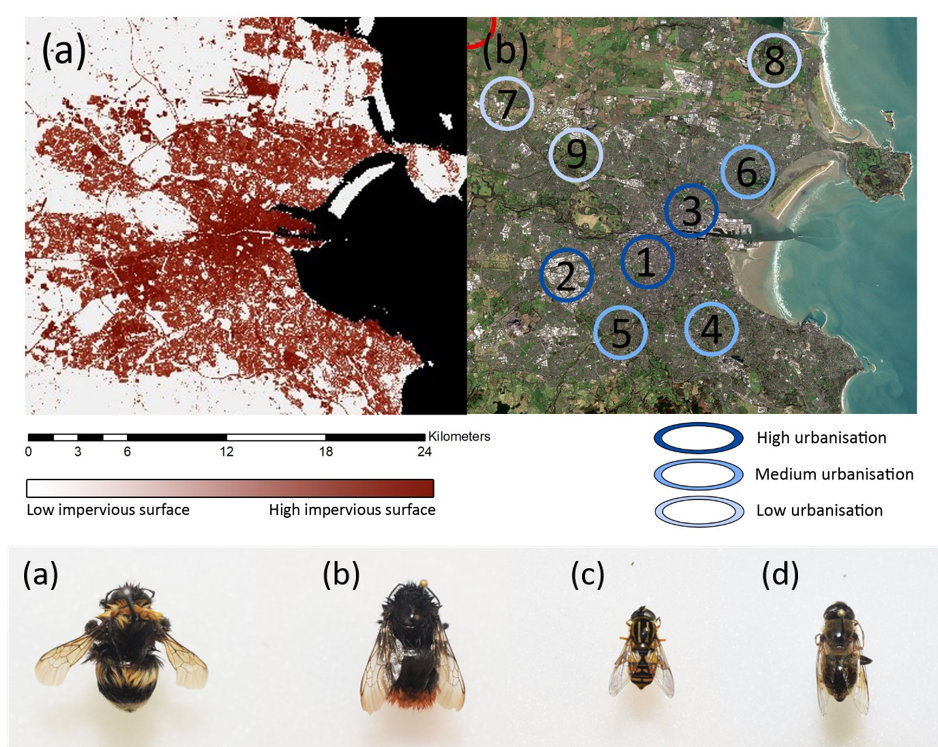
Neil Mahon
Email | mahonne@tcd.ie
Monitoring the respiratory system of the world most active lizards.
My project looked at the respiratory system of monitor lizards, in particular how the volume of the lungs and airways scales with increasing body mass. It was a desk top study where I made measurements from CT scans and performed allometric analyses. There is proportionally as much difference in size between the smallest and largest monitor lizard, as there is between a mouse and an elephant, making them an ideal candidate for examining how biological variables scale with body mass. I found that despite this enormous body size disparity, the volume of the lungs, primary bronchi and trachea scales in direction proportion to body mass. These lizards have recently been found to exhibit unidirectional breathing (as seen in birds), implying that they do not breathe tidally like mammals, as previously thought. For this reason I also decided to characterise flow patterns in their airways using some basic fluid mechanics equations, and found that flow is identical to that seen in the trachea and primary bronchi of birds. This is pretty interesting because it provides further evidence that the respiratory system and breathing mechanisms of monitor lizards is more closely related to birds than we previously thought. My project also generated some useful allometric equations that can be employed by scientists studying monitor lizards, where it is not possible to directly measure respiratory volumes.
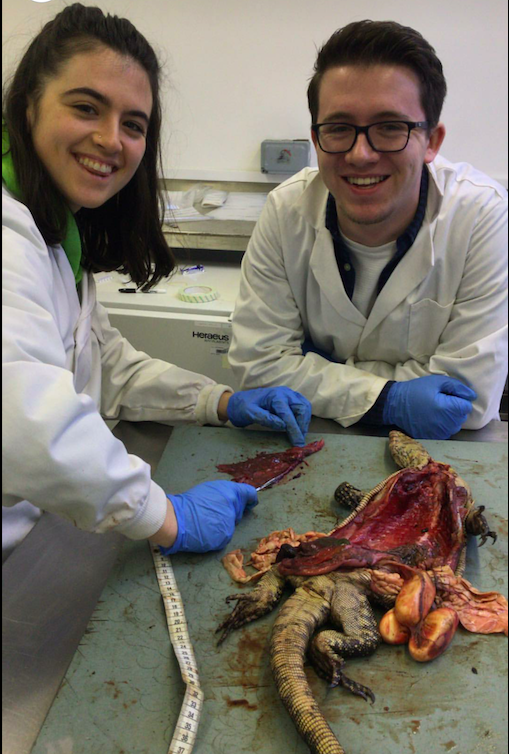
Rachel Hester
Email | rhester@tcd.ie
Twitter | @_RachelHester
It’s Getting Hot in Here
My final year thesis looked at the individual and combined effects of temperature and cypermethrin on freshwater amphipods, Gammarus spp. Cypermethrin is a synthetic pyrethroid used in insecticides, which is known to be extremely toxic to non-target aquatic invertebrates. I really enjoyed carrying out the field sampling at Lough Ennell in Westmeath, despite the miserable Irish weather! In the experimental study, Gammarus were exposed to a range of temperatures and chemical concentrations. My main finding was that temperature had an extremely significant effect on the survivorship of the amphipods, while the effects of cypermethrin were not as significant. The results indicate that rising temperatures may negatively impact important keystone species like Gammarus, and subsequently the trophic food webs of aquatic ecosystems. I found the project really interesting because of its relevance in terms of climate change and anthropogenic stressors in today’s world. I hope that my results will highlight the importance of considering temperature as an additional stressor in future studies.
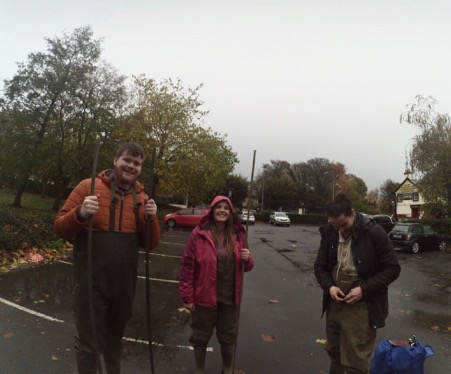
Emma Ní Dhonnchadha
Email | nidhonne@tcd.ie
Twitter | @Emma_ni
Dace, a difficult case
My final year thesis investigated if the invasive species Dace (Leuciscus leuciscus) had an impact on the stomach nematode (Cystidicoloides tenuissima) population in the native Brown trout (Salmo trutta). Samples of 250 Brown trout were taken in 2015 and 2017 from two sites. Site one was Munster Blackwater river, which is where Dace was first introduced into Irish waters in 1889 and is referred to as the invasive core. Site two is the River Barrow, Dace was first recorded here in 1994 and is known as the invasive front. The prevalence, abundance and intensity of C.tenuissima was calculated. The C.tenuissima population was extremely aggregated. The hosts were categorised by worm burden and then a subset of females from each category was measured to find evidence of a density-dependent relationship occurring. The possible factors that influence the body length of the female C.tenuissima were investigated. Blackwater 2015 sample was found to have the highest prevalence, abundance and intensity of C. tenuissima. No significant difference in body length was found between the worm burden categories and thus no evidence of a density-dependent relationship was found either. However year was found to have an influence on the body length.
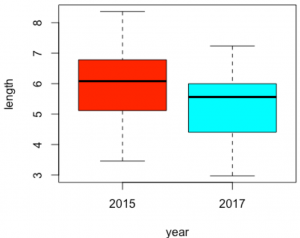
Saoirse O’Mahony
Email | omahonsa@tcd.ie
Living Fossils and Secret Mutants
My thesis was on the Ginkgoales, a group of plants related to (and including) Ginkgo biloba in the fossil record. Ginkgo is known as a “living fossil” because it has remained relatively unchanged over its approximately 300 million year old evolution. But recent research seems to show that this living fossil isn’t as unchanging as we had previously thought! Mutant polyploid Ginkgos have been found in Botanic Gardens, which have mutations called “Whole Genome Duplications“. At some point their whole genome was multiplied. In my project I found 2 of these mutants – tetraploids – in Trinity’s own Ginkgo collection. But that wasn’t all! There was also a palaeobotanical part of my project, and I found these mutants in some fossils from East Greenland. These fossil Ginkgoales spanned the Triassic-Jurassic mass extinction, and there was actually more of the mutants after the extinction event. I think that these mutants were good at surviving the crazy conditions of a mass extinction because of their whole genome duplication. With extra copies of every gene, they were more free to adapt and change with the extreme environment.
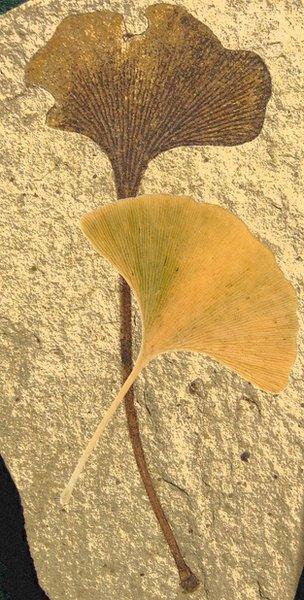
Jessie Dolliver
Email | dollivej@tcd.ie
Twitter | @PoppyDolliver
Does Body Mass Inhibit Mimicry Evolution?
My project involved investigating the individual traits any given species possesses, with an emphasis on body mass, in order to determine whether there any factors which inhibit the evolution of mimicry. This analysis was carried out using the program, NetLogo, as well as analysing existing data of mimetic species. The results showed that body mass, reproduction rates and even the memory duration of the predator can inhibit the evolution of successful mimicry. Body mass was shown to be the primary factor in determining whether mimicry could evolve in a given species or not.
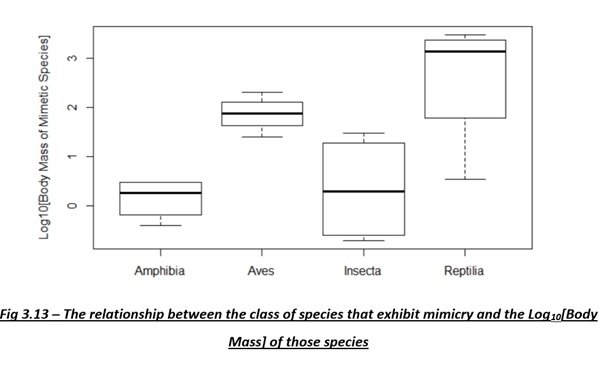
Jack O’Connor
Email | oconnj24@tcd.ie
Twitter | @jocebay102078
Bog Restoration in Ireland
For my final year project, I examined and compared the aquatic macroinvertebrate communities in two raised bogs in the midlands, one being an active raised bog and one a restored cutover. This was done to determine how successful the restoration work done was. I compared the abundance of invertebrates, the diversity of invertebrates present and the community composition of the different bogs studied. I also completed some water sample analysis on the samples. There was no significant difference found in any of the water samples tested, and there was no difference either when the diversity was compared in both bogs. The abundance of invertebrates and the community structure in both bogs was found to be significantly different. However, most of the differences were driven by the abundance of species that were found in both bogs. I really enjoyed the whole experience and absolutely love all things bog related now.
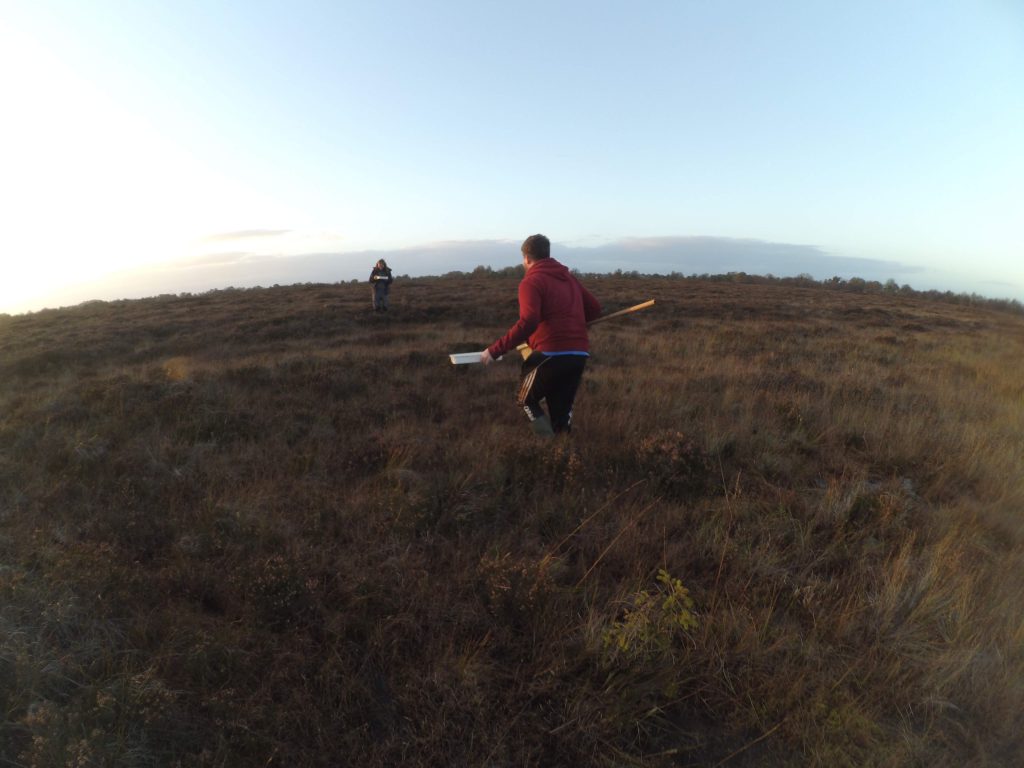
Aaron Gallagher
Twitter | @AaronGall1997
Email | aagallag@tcd.ie

